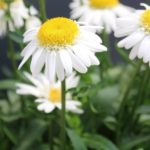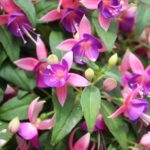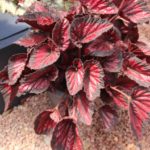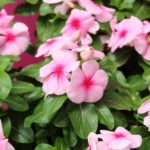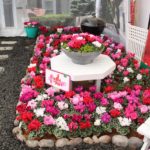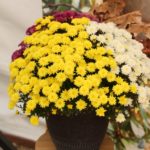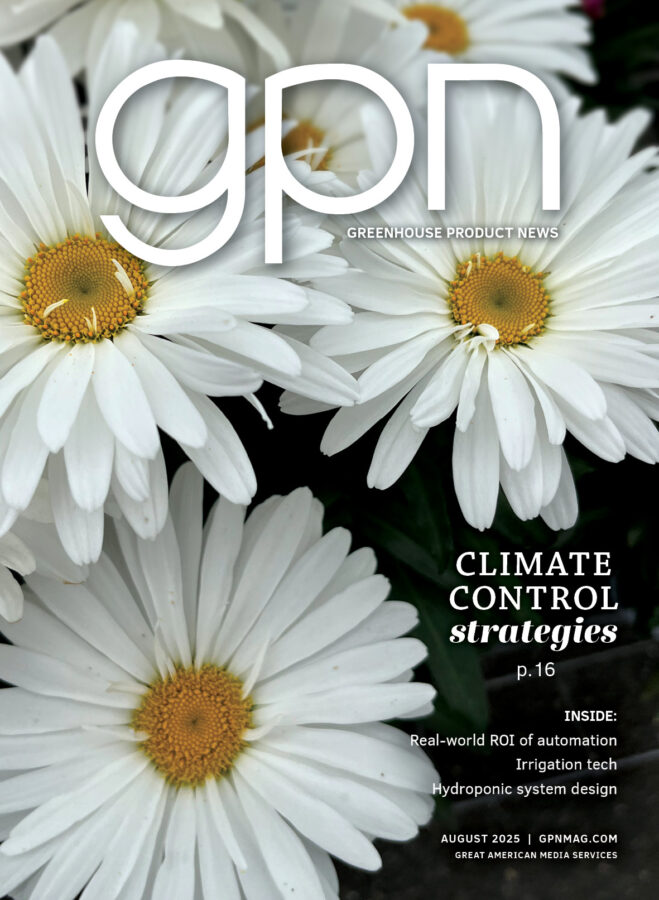Emerald Coast Growers Presents Infertile Miscanthus Collection
Ask the Expert
(Sponsored) Ornamental grasses continue to gain in popularity in North American gardens and landscapes, and that’s no surprise when considering their many benefits. Whether they are selected for their beauty and grace, or because they can fill needs for drought tolerance, tough soil conditions, or native habitats, there is an ornamental grass for nearly every need. And while their beautiful flowers can be the icing on the cake atop striking foliage, there are situations where viable seed is not desirable, in which case infertile grasses become the perfect option.
For the grower, this helps keep the variety true to type in container production. It is also an advantage for the consumer to help keep the variety in check in their garden and provide confidence that the plant will remain true to name.
The other, perhaps less obvious advantage of infertile grasses is that because the plants aren’t putting energy into producing seeds, they are more vigorous, flower earlier, and produce flowers for a longer period of time.
Emerald Coast Growers – one of North America’s premier supplier of ornamental grass liners and plugs – recognized the need for infertile grasses decades ago, and works diligently with breeders and university researchers to continuously bring more infertile grasses to the market that are as beautiful as they are valuable. While their collection of infertile grasses includes over a dozen Pennisetum and Miscanthus, today’s spotlight is on their all-star lineup of infertile Miscanthus, including its newest addition, Morning Sun™.
Developed by Dr. Wayne Hanna with the University of Georgia, Morning Sun™ (‘TiftM78st’) PPAF features variegated foliage with striking gold horizontal bands with an arching habit, with graceful tan flowers held high above the foliage. It adds the typical Miscanthus ‘Zebrinus’ form that had previously been missing from the infertile Miscanthus lineup. It grows 6-8’ tall in the garden, is hardy to USDA Zones 5-10, and prefers full sun.
Miscanthus ×giganteus (Giant Miscanthus) features magnificent upright clumps of wide green leaves with flower stalks that soar to 10’. It is a stunning selection discovered in Japan in the early 20th century. Its light pink plumes mature to silver, creating a bold garden statement. Hardy to USDA Zones 4-9.

Miscanthus sinensis Bandwidth™ (‘NCMS2B’) PP29460 impresses with broad, bright gold bands that span rich green blades. Developed by Dr. Tom Ranney from North Carolina State University and introduced via Darwin Perennials, it forms full, compact stands that grow 2-3’ tall. Hardy to USDA Zones 5-10.
Another all-star introduction from NC State via Darwin Perennials is Miscanthus sinensis High Frequency™ (‘NCMS3’) PPAF. It forms 5-foot upright columns of showy blades heavily cross banded with gold. It is a Japanese silver grass. Feathery red seed heads provide autumn interest. Hardy to USDA Zones 5 -10.
Miscanthus sinensis My Fair Maiden™ (‘NCMS1’) PP26387 features green leaves with elegant buff-colored blooms in late summer. It grows up to 6-9’ in the landscape and is best suited for full sun. It’s hardy in USDA Zones 5-10.
Miscanthus sinensis Scout™ (‘M77’) PP30402, developed by Dr. Wayne Hanna at UGA and exclusively available from Emerald Coast Growers, features slender green blades with white midribs that take on spectacular fall color. It’s similar in form to Miscanthus ‘Gracillimus’. It reaches a mature height of up to 5-6’ in the garden and is hardy in USDA Zones 5-10.

Last but certainly not least, Miscanthus sinensis var. condensatus ‘Cabaret’ (Japanese silver grass) rounds out the all-star lineup with its ultra-wide blades with creamy white centers and dark green margins. It’s equally impressive as a specimen as it is in masses. Grows up to 9’ in the garden and hardy to USDA Zones 5-10.
All of these infertile Miscanthus perform best in full sun and are available in 38- and/or 72-cell liners, with the exception of M. xgiganteus, which is available in 21-cell liners. Growing requirements are the same as for fertile Miscanthus selections.
Asked what prompted the introduction of infertile grasses, Shannon Ballard, New Plants Manager for Emerald Coast, states: “We wanted to remove the concern about seed fertility in grasses. We are fortunate to work with breeders who are developing infertile Miscanthus and Pennisetum for their ornamental value, economic savings in production and performance in the garden. The ultimate reason we are offering these grasses is to be responsible in the industry. This ensures that the grower and consumer will be able to have confidence in these two genera whether they have concerns or not.”
Ballard has observed a slow and steady increase in demand for infertile grasses. “Their popularity has mostly gained momentum with growers to have an alternative for those with concerns. The Pennisetums’ sales velocity is increasing a little faster with container growers wanting better crop consistency. They also have great ornamental characteristics rivaling other grasses in the industry.”
For more information about infertile grasses or to order, please visit www.ecgrowers.com or call 877-804-7277.

© 2025 Emerald Coast Growers








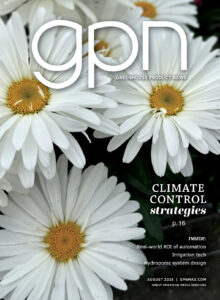
 Video Library
Video Library 

